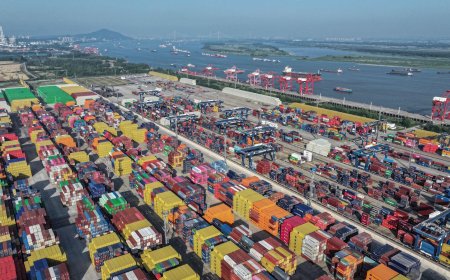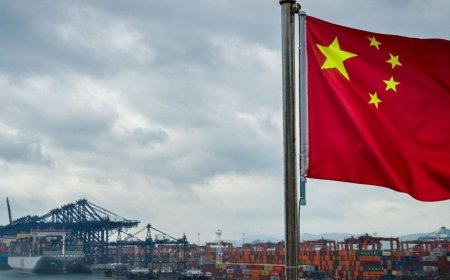Oil edges down amid bearish Trump tariff outlook
Crude oil prices slipped amid rising fears of renewed U.S.-China trade tensions, following Donald Trump's hints at fresh tariffs. Analysts warn of bearish demand outlook.

Crude oil prices eased on Wednesday as investor sentiment turned cautious in response to former U.S. President Donald Trump’s recent comments hinting at potential tariff hikes on Chinese goods if re-elected. The statements have sparked fears of a renewed trade war, which could weigh on global demand for oil, particularly from China — the world’s second-largest consumer.
Oil Prices Slip in Cautious Trade
Brent crude futures slipped by 0.4% to $84.10 per barrel, while West Texas Intermediate (WTI) crude fell 0.5% to $80.12 per barrel in intraday trading. This marks a pause after a multi-session rally, where prices were buoyed by supply disruptions and OPEC+ production cuts.
“Markets are reassessing geopolitical risks with a fresh lens following Trump’s remarks,” said Vivek Dhar, Director of Mining and Energy Commodities Research at Commonwealth Bank of Australia. “The possibility of trade friction escalating again is casting a shadow over the oil demand recovery narrative.”
Trump’s Comments Trigger Market Anxiety
During a televised interview earlier this week, Trump suggested that if he returns to the White House, he would consider imposing tariffs of up to 60% on Chinese imports. He claimed such measures would correct longstanding trade imbalances and protect American industry.
Though not policy yet, the rhetoric is reminiscent of the 2018-2019 U.S.-China trade war, which had disrupted global trade flows, dampened industrial activity, and led to weaker oil demand.
“This is a classic risk-off signal for commodity traders,” said Vandana Hari, founder of oil market consultancy Vanda Insights. “Whenever the possibility of a slowdown in global trade arises, it quickly reflects in the oil markets through lower price expectations.”
Bearish Sentiment Counters Supply Tightness
Until now, oil prices had been firming due to tight supply conditions. OPEC+ producers have largely adhered to their voluntary cuts, with Saudi Arabia recently reaffirming its 1 million barrels per day (bpd) cut through the third quarter.
In the U.S., the Energy Information Administration (EIA) reported a larger-than-expected drawdown in crude inventories last week, indicating robust domestic demand. U.S. stockpiles fell by 5.3 million barrels, versus expectations of a 3.2 million barrel decline.
Yet, geopolitical rhetoric is currently overpowering these bullish fundamentals.
“The short-term direction of oil is now more sensitive to macroeconomic developments than to supply-side variables,” said Edward Moya, Senior Market Analyst at OANDA. “Any threat to demand growth, especially from China, tends to overshadow inventory data or OPEC maneuvers.”
China Demand Concerns Resurface
China’s economic recovery, post its stringent COVID-19 lockdowns, has been uneven. Manufacturing data for June showed contraction for the second straight month, and now Trump’s tariff threats add another layer of uncertainty to the outlook.
Chinese refineries have been running at high rates, but analysts warn that a deceleration in exports or domestic consumption due to renewed U.S.-China tensions could eventually reduce the country's appetite for crude imports.
“Chinese demand is crucial for oil’s upward trajectory,” said Rystad Energy analyst Jorge Leon. “If Beijing responds aggressively to any new tariffs, oil markets could witness a prolonged correction.”
Investor Outlook: Volatility Ahead
Traders are expected to tread cautiously in the coming weeks, closely monitoring U.S. political developments, Chinese economic indicators, and upcoming OPEC+ meetings. The U.S. presidential race is already injecting uncertainty into global markets, with oil particularly sensitive to shifts in trade and foreign policy rhetoric.
“With the U.S. elections approaching, expect more volatility in oil markets,” said Giovanni Staunovo, commodity analyst at UBS. “Any hawkish tone toward China will likely result in bearish oil sentiment, at least in the short term.”
Technical indicators also suggest consolidation. Both Brent and WTI are hovering near their 200-day moving averages, signaling indecision among market participants.
While supply-side fundamentals remain supportive of higher prices, it is the growing geopolitical noise that is currently driving sentiment. For now, oil traders appear to be in wait-and-watch mode, balancing fears of demand destruction against evidence of tightening inventories.
As Trump’s tariff narrative gains traction, especially among his political base, markets will be wary of another cycle of economic disruption — one that could derail the fragile post-pandemic recovery in oil demand.
What's Your Reaction?
 Like
0
Like
0
 Dislike
0
Dislike
0
 Love
0
Love
0
 Funny
0
Funny
0
 Angry
0
Angry
0
 Sad
0
Sad
0
 Wow
0
Wow
0













































































